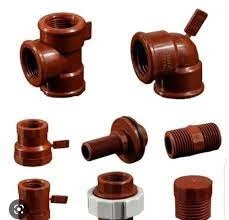
PPH pipes and fittings are gaining traction in various sectors due to their unique properties and versatility. But what exactly are they, and why are they becoming a go-to choice for many projects? Let’s explore!
What are PPH Pipes?
Definition and Composition
PPH stands for Polypropylene Homopolymer, a type of thermoplastic polymer that is widely used for pipes and fittings. Unlike other materials, PPH is made solely from polypropylene, which enhances its structural integrity and performance.
Properties of PPH Material
PPH boasts several properties that make it stand out:
- Lightweight: Easy to handle and transport.
- High Strength: Resistant to impact and stress.
- Chemical Resistance: Ideal for transporting chemicals without degradation.
Benefits of PPH Pipes
Durability and Longevity
One of the biggest draws of PPH pipes is their durability. They can last for decades without significant wear and tear, making them a cost-effective choice in the long run.
Chemical Resistance
PPH pipes excel in environments where they are exposed to aggressive chemicals. This makes them suitable for industries such as pharmaceuticals, agriculture, and more.
Temperature Tolerance
These pipes can handle a wide range of temperatures, from very cold to quite hot, without losing structural integrity. This versatility is crucial in various applications.
Common Applications of PPH Pipes
Industrial Uses
In industries, PPH Pipes and Fittings are often used for transporting chemicals, water, and other liquids. Their robustness ensures that they can handle rigorous conditions.
Residential Applications
They offer a reliable solution that homeowners can trust.
PPH Fittings: An Overview
Types of PPH Fittings
PPH fittings come in various shapes and sizes to accommodate different plumbing needs.
Elbows
These are used to change the direction of the piping system, essential for navigating around obstacles.
Tees
Tees allow for the branching of pipes, making them perfect for systems that require multiple directions.
Couplings
Used to connect two pipes, couplings are crucial for extending the length of a piping system.
Installation of PPH Pipes and Fittings
Tools Required
- Pipe cutter
- Deburring tool
- Wrench
- Measuring tape
Step-by-Step Installation Process
- Measure and Cut: Measure the required length of the pipe and cut it using a pipe cutter.
- Deburr: Remove any sharp edges using a deburring tool.
- Connect Fittings: Join the fittings to the pipes, ensuring a snug fit.
- Secure: Use a wrench to tighten connections where necessary.
Maintenance of PPH Systems
Routine Checks
It’s vital to regularly inspect your PPH system for any signs of wear, leaks, or blockages.
Common Issues and Solutions
If you encounter leaks, check the fittings first. Often, a simple tightening will resolve the issue. For blockages, a thorough cleaning is usually sufficient.
Comparing PPH with Other Pipe Materials
PPH vs. PVC
This makes PPH a better option for specialized applications.
Environmental Impact of PPH Pipes
Frequently Asked Questions (FAQs)
Can PPH pipes be recycled?
Yes, PPH is recyclable, making it a more sustainable choice.
Are PPH pipes suitable for drinking water?
Absolutely! PPH pipes meet safety standards for transporting drinking water.